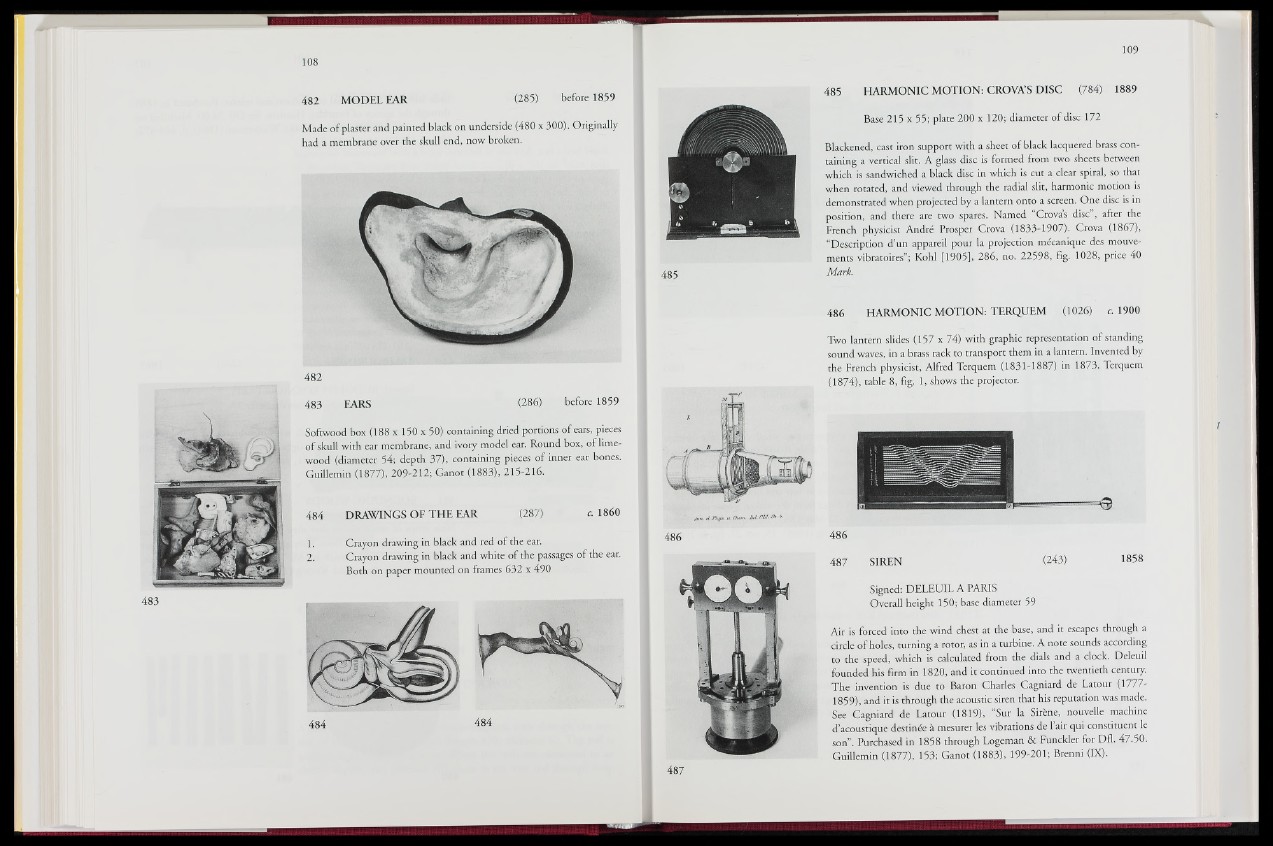
482 MODEL EAR (285) before 1859
Made of plaster and painted black on underside (480 x 300). Originally-
had a membrane over the skull end, now broken.
482
483 EARS (286) before 1859
Softwood box (188 x 150 x 50) containing dried portions of ears, pieces
of skull with ear membrane, and ivory model ear. Round box, of lime-
wood (diameter 54; depth 37), containing pieces of inner ear bones.
Guillemin (1877), 209-212; Ganot (1883), 215-216.
484 DRAWINGS OF THE EAR (287) c. I860
1. Crayon drawing in black and red of the ear.
2. Crayon drawing in black and white of the passages of the ear.
Both on paper mounted on frames 632 x 490
485 HARMONIC MOTION: CROVA’S DISC (784) 1889
Base 215 x 55; plate 200 x 120; diameter of disc 172
Blackened, cast iron support with a sheet of black lacquered brass containing
a vertical slit. A glass disc is formed from two sheets between
which is sandwiched a black disc in which is cut a clear spiral, so that
when rotated, and viewed through the radial slit, harmonic motion is
demonstrated when projected by a lantern onto a screen. One disc is in
position, and there are two spares. Named “Crova’s disc , after the
French physicist André Prosper Crova (1833-1907). Crova (1867),
“Description d’un appareil pour la projection mécanique des mouvements
vibratoires”; Kohl [1905], 286, no. 22598, fig. 1028, price 40
Mark.
486 HARMONIC MOTION: TERQUEM (1026) c. 1900
Two lantern slides (157 x 74) with graphic representation of standing
sound waves, in a brass rack to transport them in a lantern. Invented by
the French physicist, Alfred Terquem (1831-1887) in 1873. Terquem
| | l 874), table 8, fig. 1, shows the projector.
SIREN
Signed: DELEUIL A PARIS
Overall height 150; base diameter 59
Air is forced into the wind chest at the base, and it escapes through a
circle of holes, turning a rotor, as in a turbine. A note sounds according
to the speed, which is calculated from the dials and a clock. Deleuil
founded his firm in 1820, and it continued into the twentieth century.
The invention is due to Baron Charles Cagniard de Latour (1777-
1859), and it is through the acoustic siren that his reputation was made.
See Cagniard de Latour (1819), “Sur la Sirène, nouvelle machine
d’acoustique destinée à mesurer les vibrations de 1 air qui constituent le
son”. Purchased in 1858 through Logeman & Funckler for Dfl. 47.50.
Guillemin (1877), 153; Ganot (1883), 199-201; Brenni (IX).